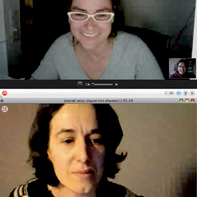27 Dic Santaclara Graphics: I represent it visually, therefore it is
 The (massive/compulsive) consumption of data is a distinctive characteristic of our time. We have access to unlimited figures on current affairs, about our environment, about anything we may wish to know. We have always measured, weighed, compared, and quantified all sorts of aspects relating to our environment.
The (massive/compulsive) consumption of data is a distinctive characteristic of our time. We have access to unlimited figures on current affairs, about our environment, about anything we may wish to know. We have always measured, weighed, compared, and quantified all sorts of aspects relating to our environment.
Today, this behaviour has become almost a necessity. The figures let us establish references in relation to ourselves and the world that we inhabit. They help us draw our situation map, to understand the context and gain a new perspective.
The strategies we develop to select, classify, comprehend and represent the information visually are simply fascinating. Using visualisation, we dive into oceans of items and emerge to the surface with a slightly improved understanding of reality. In a sense, we use the tools offered by graphic representation to construct new interpretations of the world, we search for a new gaze, more lucid, more ironic, keener… even more fun.
We find a clear example of this in the graphics department of The New York Times. Their superb coverage of the results of the recent US presidential elections are a brilliant example to follow. It demonstrated an impeccable application of infographics, characterised by the accuracy of the information, a highly organised abundance of comparative data, and the development of new and effective codes of representation. They went as far as representing the feelings of the American people as they learned the outcomes in an effort to provide their readers with as much visual information as possible.
Infographics is not a language exclusively for the press, it also offers a valuable tool in environments like publishing, marketing or advertising.
People like the US designer Nicholas Felton demonstrate that each individual is a potential data generator. Felton publishes his own “annual reports.” These are startling graphic compilations of his personal life. From mapped displacements to detailed comparisons of purchased books and records, or restaurants he frequented, etc, etc. In short, an exhaustive x-ray of the enormous amount of information that can be generated by our personal or work habits. Perhaps for Nicholas Felton this is just an original form of self-analysis, but in any case it represents another step in the relationship between the individual and information.
Still, the need to translate data into forms is not a new one. We can go back to 1812 and consult the figurative maps of the successive defeats of French soldiers in the Russian War. Graphics meticulously elaborated by Charles Joseph Minard to account for the devastating results of this campaign. Minard was a pioneer in the use of statistical graphs and establishing correlations between different variables to obtain truly astounding visual solutions. More at Articulado’s book.

